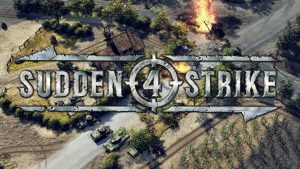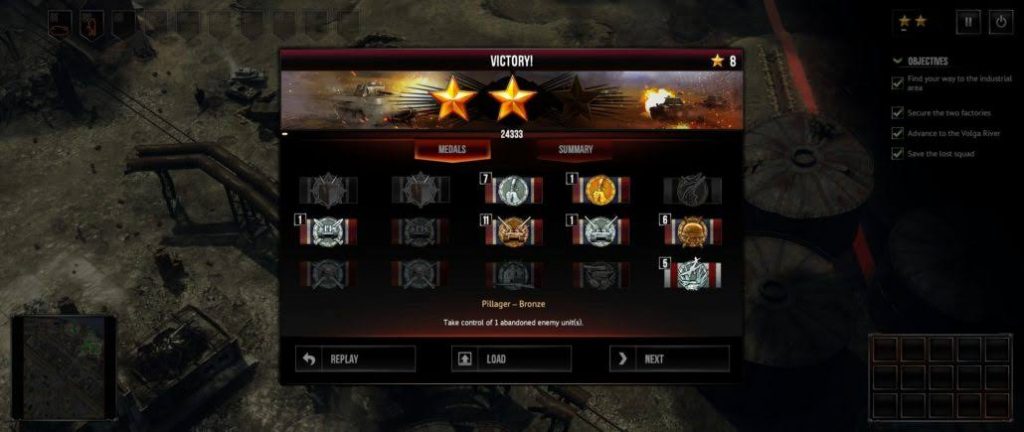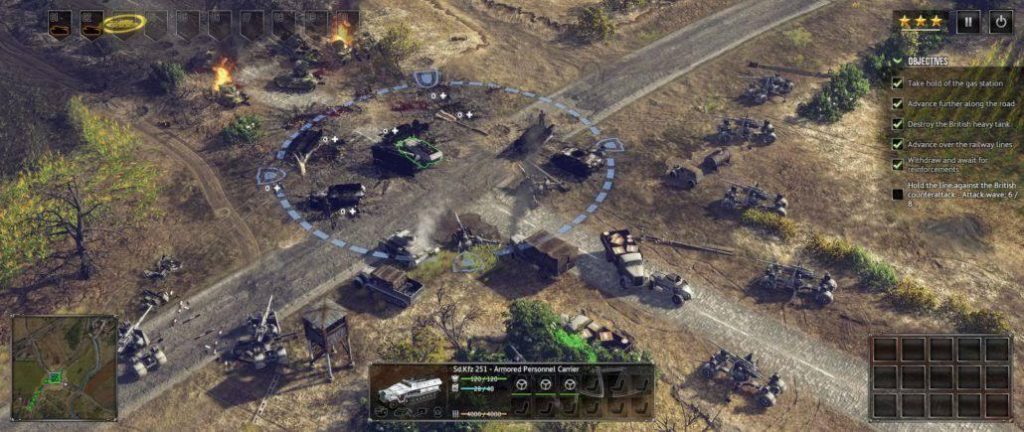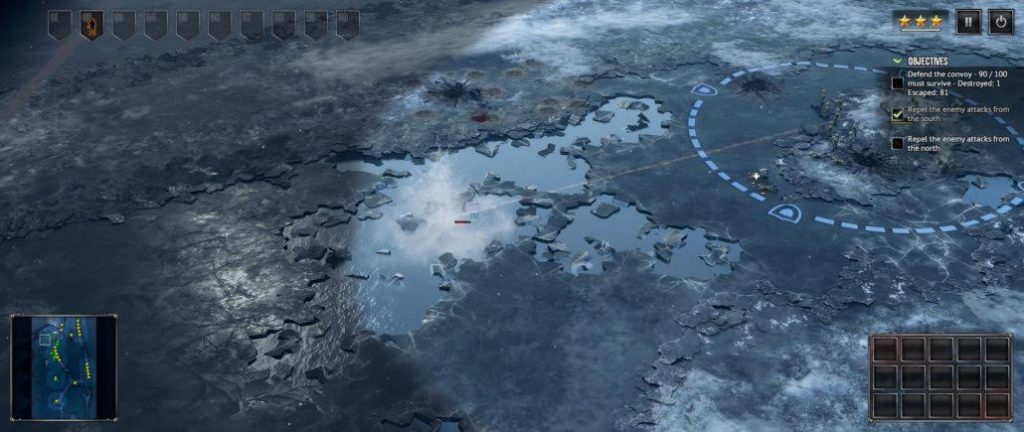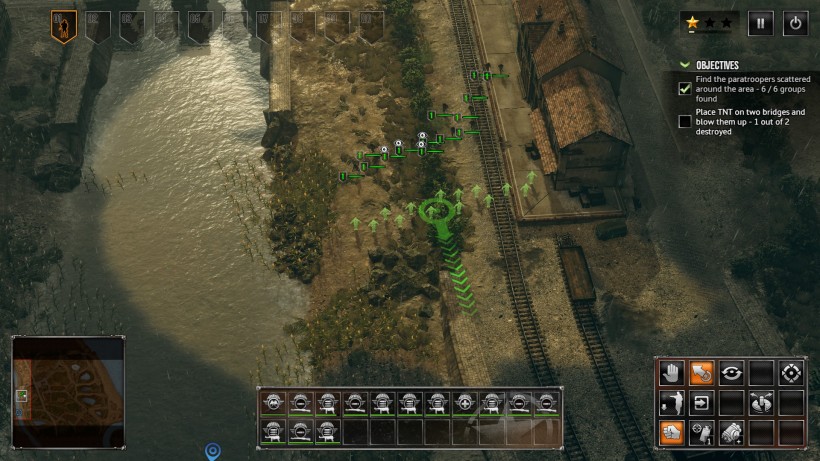Sudden Strike 4 REVIEW
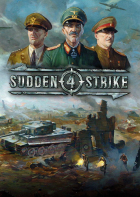

| Game Name: | Sudden Strike 4 |
| Platforms: | Microsoft Windows, macOS, SteamOS, & Linux |
| Publisher(s): | Kalypso Media |
| Developer(s): | Kite Games |
| Genre(s): | Real-time tactics |
| Release Date: | August 11, 2017 , on PC , and , August 15, 2017 , on PS4 |
| ESRB Rating: | T for Teen |
Sudden Strike 4 is a real-time strategy game set in World War II featuring three separate campaigns – one for the Allies, the Germans, and the Soviet Union – based on real battles. There’s over twenty missions in total, and these are presented to the player without any political pandering or moral high-grounds. World War II is one of the few wars in human history in which we’re all pretty unanimous about who the baddies were, and a lot of games and other media tend to use that as license to portray the Germans as pantomime villains. It’s refreshing to see the Germans in Sudden Strike 4 presented not as cartoonish stereotypes, but simply as soldiers fighting for their country. There’s nothing sensationalist about it; it’s an earnest attempt to recreate important battles in the real-time strategy format, without assigning blame or adhering to a good versus evil narrative.
Numbers, and the use of them, should always follow simple rules. Indeed, nature and all of life itself follow mathematical patterns in one way or another. You would think, then, that video games that run on computers, basically giant number machines, would follow simple numerical rules. At least you would imagine the game would tell you what you need to know. Sudden Strike 4 is here to completely blow that logical assumption out of the water.
I’m starting by mentioning this because it’s been one of my main bugbears throughout the 25+ hours I’ve spent with Sudden Strike 4. The bugbear is that the game simply doesn’t tell you the value of anything. This isn’t to mean any sort of monetary value of a tank or soldier. This is WW2, the value of men and the machines made by men were close to nil. Particularly true if they happened to be part of the Soviet army. I mean the value of completing a medal-gaining combat feat.
This is the first time in the series history that Kite Games have taken the reigns. Former developers Fireglow Games no longer exist and following the poor reception Sudden Strike 3 got, it’s a reasonable surprise to see the franchise back. For the most part, the game simply brings back what made the first two of the series so great. What turns out to be the only new feature is the aforementioned medals which work with the new doctrines system.
In theory, you’re rewarded for making sound tactical decisions. Flanking a tank, shooting and destroying it from the rear rewards you with the backstabber medal. Popping your men in and taking control of enemy vehicles results in a pillager medal. There are fifteen medals and each can be achieved as much as possible, rewarding you with points. These points are tallied up at the end of each mission, rewarding a maximum of three stars.
Here’s where the problem comes. There’s no way to actually tell how many points a particular medal earns you. Furthermore, there’s also no way to tell exactly how many points you need. There’s a bar at the top right-hand corner but it may as well not be there. It shows you the number of stars you’ve earned so far, but the line beneath it doesn’t move in the slightest. There’s no indication on whether a particular tactic is earning you enough to gain the next star.
After selecting a mission you’re given a brief run-down about what led to the battle you’re ready to participate in. It’s nothing ground-breaking but we enjoyed getting some context for why we were fighting and what the stakes were. You can choose from three famous generals to play as, each coming with their own perks. The differences between the generals might appear slight, but the buffs they provide can prove decisive in battle. Oddly, it doesn’t matter whether you’re playing as the Allies, Soviets, or Germans as to what your advisers sound like – they’re always American, and while we understand that the constraints of a tight budget perhaps didn’t allow for unique voice actors for each campaign, it’s still somewhat disconcerting to hear a rootin’, tootin’ cowboy address you as, “Herr kommandant!”
Each battle sees you given a set number of units of different types, which you then must use to complete a set goal. There’s no base building or any other distractions. Occasionally throughout the mission you’ll receive reinforcements to bolster your squad. These extra units can be a godsend when you’re facing an unrelenting tide of enemies, but other than in these select instances your units are a finite resource, and so deciding which ones you can risk sending into a skirmish is the key to victory. Sometimes you’ll be able to use ground troops to hide in a building to surprise attack an enemy anti-tank gun before sending your vehicles through, and other times hidden snipers will make crossing land on foot a suicidal endeavour. Selecting all of your troops and ordering them into battle together might get you through the first couple of missions, but in most situations it’ll mean a swift end to your war effort.
It’s a shame because the star and points system leads into the game’s only real new feature: doctrines. At the start of each of the games 25 levels, you can select whether to use the infantry, tank or support general. Each of these have their own abilities, activated through the use of the stars you’ve gained throughout the campaign. What must be noted is that stars gained in one campaign are only usable in that particular campaign. While it offers some level of customisation, it’s barebones at best. Indeed, a number of abilities like the option to pop open the hatch of your tanks and get a view distance increase is shared by all of the generals.
On the subject of view distance, the game gets this wrong in so many ways. I understand that infantry were used as the eyes of tanks, to an extent. Their primary use was for close-cover protection. The problem with the line of sight offered here is that since infantry doesn’t actually use tanks as cover, once your infantry are dead then the minuscule range of tanks leaves them sitting ducks to the enemy with even one infantry acting as a spotter.
This lack of cover offered by tanks is a huge oversight in what is otherwise a greatly realistic game. All too often I’ve seen my soldiers sit behind a tank, getting shot at by riflemen with bullets that simply pass through the tank. It’s perplexing because Kite Games have made it so bullets and small shells ricochet off of tanks. It looks absolutely fantastic when this happens. It also highlights the incredibly annoying system that punishes you for keeping your infantry close to the battle.
What makes it more of a shame is that they’ve managed to get everything else so right. The rubble of buildings, although carefully placed in such as Stalingrad, offers for an infantry playground. Sneak around to the rear of anti-tank emplacements through the rubble with infantry, clearing them to allow for your tanks to head through unharassed. These build up areas are notably slower as well as vehicles attempt to force their way through the rubble of buildings and, significantly, other destroyed vehicles.
Using the environment against your enemy turns out to be one of the best things the game gets right. Using the environment as cover is far from unusual in strategy games. What makes Sudden Strike different is just how much you can use it. Soldiers can hide in the wheat fields of Normandy, ready to ambush anybody unfortunate enough to cross them. In the built up city of Stalingrad, one shot against the middle or rear tank in a column could very easily lead to the loss of them all as their exit is blocked.
It’s particularly good because every vehicle in the game can be crippled through multiple means. Roll over a mine or suffer an unlucky shot from the side, say bye to your tracks. Take a little too much small fire when the tank commander is out of the hatch and your eyes are suddenly lost. It’s the finer details that really help Sudden Strike stand out amongst other recent strategy titles. Everything from fuel, ammunition and even the weight of a vehicle comes into play.
Particularly good are the abilities that can be unlocked for each unit. Anti-tank and anti-aircraft guns can be fortified with sandbags. Infantry can carry a number of grenades or mines. Tanks can also fortify themselves to an extent with sandbags. In addition, increased armour and speed, as well as other features can all be unlocked through the doctrine system. These add an extra layer of tactical decision making to an already intense game.
What must be said is that the AI is pretty damn poor. Back when I first saw Sudden Strike 4 at Gamescom last year the developers were high on the AI and its responsive nature. I’m fairly sad in the fact that this isn’t visible at all. Enemies will send up flares to show they’re being attacked but it doesn’t seem to draw any real reinforcements. It’s fortunate in a way because the game is already difficult. An AI that actually attempted to counter your moves would make for an incredibly difficult game.
I also have huge complaints over the use of repair and supply trucks, as well as medics. On a basic level they act autonomously, working on an allied unit in need that’s close by. All too often they also simply stop doing their jobs unless explicitly directed. In a game that’s already difficult, it simply makes these particular units frustrating as they wont do their jobs.
Working well with this are the aesthetics. Although it isn’t the best looking game in the world but it has some great qualities. Particularly great are the smaller effects like the aforementioned ricocheting of bullets. It’s impressive to see a battle in full flow as well, an explosion sending the corpses of men flying or uprooting a tree. Even better are maps like Leningrad where the weight of tanks and the explosions of weapons literally cracks the ice underneath your enemy, sending them to a watery death.
Surpassing the visuals, however, is great audio design. From the sound of a tank trundling along, or a damaged vehicles engine struggling. The blast of an explosion either at your location or somewhere else in the battlefield. Even the cries of a soldier as they suddenly start to get fired upon. The sounds of battle are fantastic, with a strong soundtrack to back it up. The only outlier comes with the voice acting, which is cringeworthy at best. Listening to it give a voiceover to historical footage or talk through the main objectives is something I could do without.
All things considered, Sudden Strike 4 is a sound real-time tactics game. Arguably the best in the series, it still isn’t without its flaws. For all the great level realism and the depth of every unit, the game is let down by a shoddy AI. No matter how tactically challenging each of the 25 levels are, they’re not replayable. This inevitably is the game’s biggest issue, feeling more like you’re solving problems than facing a dynamic enemy on the battlefield.
There’s just not really a compelling reason to play Sudden Strike 4 if you’ve played just about any other similarly-themed RTS in the past 10 years. Mission design in Company of Heroes is better; the scale of Steel Division is better; the unit customization and fine controls in Men of War are better. It’s very well-trod territory for PC wargamers, and there’s little here to justify the return trip.
But that’s if you’re someone who’s been playing on PC, where real-time strategy has mined every square kilometer of European countryside for entertaining battlefield gems. Where Sudden Strike 4 will undoubtedly stand out is on PlayStation 4, where the real-time strategy market is decidedly less crowded with classic titles. And Kalypso’s decision to port the game to console makes a lot of the simplicity more understandable—RTS was always designed around mouse and keyboard, so making the jump to control pad-based input is a large and difficult step.
How that step will translate remains to be seen. While it’s theoretically possible to play the PC version of Sudden Strike 4 using a controller, I couldn’t make it beyond the second step of the tutorial—I was unable to issue a “move” command for love or money. Even selecting my troop transport was a tricky proposition, and involved very careful placement of my cursor just below where I thought it ought to go.
That doesn’t mean much of anything for the PlayStation 4 build of the game, which has assuredly seen its own round of QA testing. I have every reason to believe it works fine over there, but it wasn’t something I was able to try out myself.
Sudden Strike 4 isn’t a bad game. In fact, it’s far from a bad game. But its value depends heavily on the space it lives in, and on PC there simply isn’t a reason to play it over any number of great World War II strategy titles that have come before—even the overly-derided Company of Heroes 2 is a more fleshed-out and interesting experience here. But on PlayStation 4, where RTS wargames are vanishingly uncommon, it stands alone and could very well serve as a good introduction to a genre console players haven’t had much of a crack at.
It probably sounds like I’m being a bit pessimistic about the whole thing, but I don’t mean to – it’s merely a game we’ve all seen before, and there isn’t much about it that stands out. Ultimately that’s one of the reasons the genre died a death, because it was just far too saturated and far too limited in how an RTS can play out. What you have with Sudden Strike 4 is a game reminiscent of its former self and of the glory the genre used to be. It might not do anything different, but at the same time that doesn’t stop it from appealing and absorbing those players who do still have a fondness for this particular way of playing.
•POSITIVES
Retains the methodical Sudden Strike gameplay
Handy controls for RTS on console
Depth of strategy feels rewarding
•NEGATIVES
Doesn’t do anything different for an RTS



